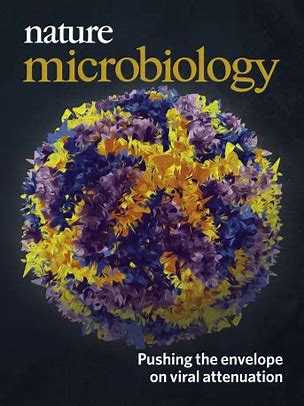- Topic:Environmental change
Flexible foraging behaviour increases predator vulnerability to climate change
Based on a combination of (historical) empirical data and model simulations the authors investigated how size-selective adaptive behaviour under warmer conditions in demersal marine fishes might affect their long-term population stability. Under warmer conditions the fish species studied tend to consume less efficiently by choosing smaller and more abundant prey increasing their extinction risk.

Worldwide moderate-resolution mapping of lake surface chl-a reveals variable responses to global change (1997–2020)
Whether a lake appears blue or green is also related to its chlorophyll-a content. Researchers led by IGB used satellite data to draw conclusions about the concentrations of the green pigment produced by algae.
Towards critical white ice conditions in lakes under global warming
The quality of lake ice is of paramount importance for ice safety and lake ecology under ice. In 2020/2021, the researchers conducted a coordinated sampling campaign of lake ice quality during one of the warmest winters since 1880. They showed that lake ice during this period generally consisted of unstable white ice, which at times accounted for up to 100 percent of the total ice thickness.
The era of reference genomes in conservation genomics
The European Reference Genome Atlas (ERGA) is a pan-European scientific response to the current threats to biodiversity that aims to generate reference genomes of eukaryotic species across the tree of life. ERGA reference genomes will include threatened, endemic, and keystone species, as well as pests and species important to agriculture, fisheries, and ecosystem function.
Antecedent lake conditions shape resistance and resilience of a shallow lake ecosystem following extreme wind storms
The goal was to develop a systematic, standardized and quantitative methodology for the synthesis of resistance and resilience relative to short-term lake and extreme storm conditions. Resistance and resilience following extreme storms are primarily shaped by antecedent turbidity and thermal conditions. Increased storm intensity and duration diminish resistance and resilience of the lake.
Cross-continental importance of CH4 emissions from dry inland-waters
Despite significant progress in quantifying greenhouse gas emissions from dry inland waters, little is known about methane (CH4). The authors determined CH4 emissions from dry sediments across continents and found that the CH4 contribution ranged from 10 to 21% of the equivalent CO2 emissions. Therefore, CH4 emissions from dry inland waters should be considered for the global carbon cycle.
Warming alters juvenile carp effects on macrophytes resulting in a shift to turbid conditions in freshwater mesocosms
The authors tested the single and combined effects of warmer water (+4.5°C) and benthivorous juvenile common carp on aquatic macrophytes in 24 mesocosms (2500 L). Our study provides evidence for a regime shift from clear-water conditions dominated by submerged or floating-leaved macrophytes to a turbid state triggered by warming impacts on benthivorous fish rather than on macrophytes.
Climate-induced forest dieback drives compositional changes in insect communities that are more pronounced for rare species
Insects declines are now recognised as a consequence of global change. The authors set out to determine the role of drought-induced forest decline in these changes. Using field samples in the Pyrenees and DNA-metabarcoding to determine the species that occur there, they found no loss of species richness in forests experiencing tree loss, but uncovered large differences in the insect communities.
Marine algae facilitate transfer of microplastics and associated pollutants into food webs
In this conceptual paper, the authors argue that micro- and macro-algae represent an underappreciated, yet, important pathway for transporting microplastics and associated pollutants via marine food webs to humans, facilitating potential invasion of pathogens into the human body. For the assessment of human health risks, interactions between microplastics and algae need to be explored.
Recovery of freshwater microbial communities after extreme rain events is mediated by cyclic succession
The authors investigated the resilience of aquatic microbial communities, especially in small ponds, against flooding events. The most interesting result of their high temporal-resolution study was that the microbial communities, in particular bacteria, were surprisingly resilient against flooding events and that bacterial community repeatedly showed a defined path of recovery.









